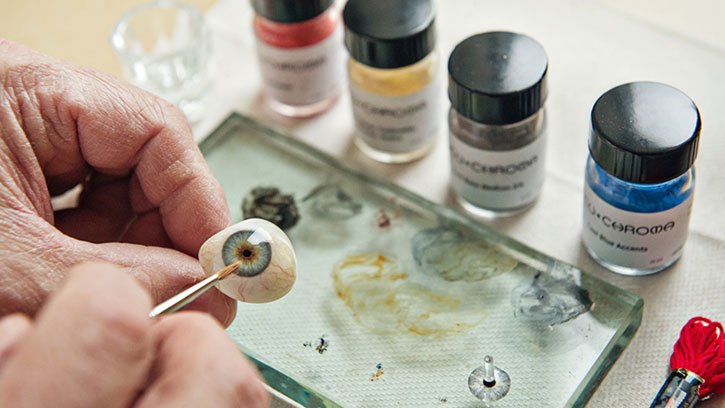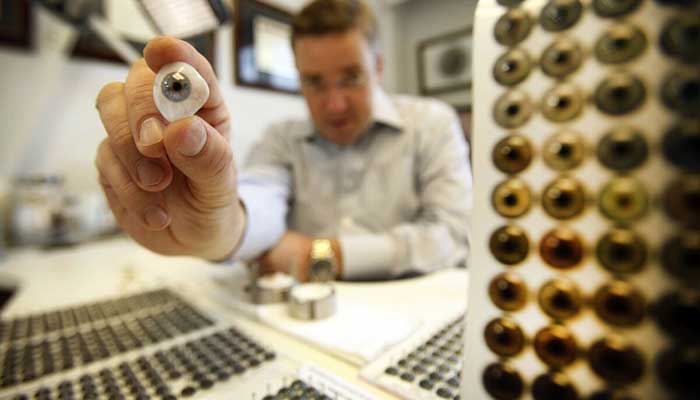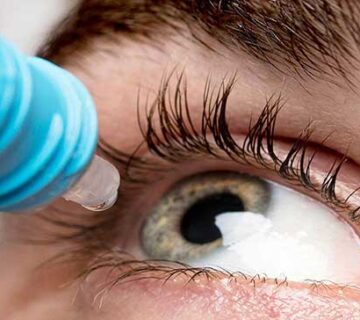An ocularist refers to a person who specializes and is skilled in the fabrication and customization of artificial eyes. The creation of ocular prostheses involves numerous complexities, and an individual working in this field must possess high technical capabilities. This article provides explanations about ocularists, their duties, and the challenges of artificial eye fabrication.

What is an Ocularist?
The human eye may need to be removed (enucleated) for various reasons. After eye removal surgery, the empty space created in that area results in an unnatural appearance for the individual. Therefore, many people use an ocular prosthesis, or artificial eye, to achieve a natural look. The fabrication of an artificial eye must be performed by specialists in this field. These individuals, who possess the necessary skill and precision, are called ocularists. Mahan Artificial Eye Clinic, utilizing the most skilled ocularists and specialized artificial eye doctors, assures you that they will accompany you every step of the way and provide a pleasant experience.
A professional ocularist must possess unique skills related to the fabrication and customization of artificial eyes, or ocular prostheses. This profession is highly specialized and complex, combining art, medical expertise, and technical capabilities. Essentially, the more skilled the ocularist, the more natural and comfortable the eye they can create for the patient. Therefore, the work of an ocularist holds significant value and importance.
Overall, an ocularist plays the most crucial role in the fabrication of an artificial eye, thereby helping patients restore their facial aesthetics and boost their self-confidence. By precisely crafting an ocular prosthesis, an ocularist can also restore eye movement. It is noteworthy that in many cases, if the fabrication process is performed with high precision and skill, others will not notice the artificial eye.
Duties and Responsibilities of an Ocularist
As a fabricator of artificial eyes, an ocularist has specific duties and responsibilities, outlined and explained below:
Accurate Assessment and Consultation:
The process of fabricating an ocular prosthesis begins with a precise and comprehensive assessment of the eye socket, eyelids, and existing healthy eye tissue. At this stage, photographs are taken of the affected area, and necessary measurements are meticulously recorded. This serves as the baseline for the customization process. Additionally, the ocularist must communicate honestly with the patient, creating a space to understand their preferences, concerns, and goals.
Mold Fabrication:
Based on the gathered information, the ocularist designs and creates a complex mold for the patient’s artificial eye. This mold is constructed with high precision according to the unique characteristics of the individual’s natural eye. Aspects such as coloration, venous patterns, and textural details must be incorporated into an ocular prosthesis. The ocularist must use high-quality materials, typically medical-grade acrylic or silicone, for fabricating the prosthesis.
Precise Color Matching and Painting:
Achieving flawless harmony between the prosthesis and the natural eye is a fundamental challenge for ocularists. With high skill and expertise, they blend and layer pigments to perform precise coloring for the individual’s eye. This stage of artificial eye fabrication requires great precision and a deep understanding of color theory by the ocularist to create a more natural and flawless appearance for the prosthesis.
Customization and Precise Fitting:
Once the artificial eye is fabricated, it must be carefully placed into the eye socket. One of the ocularist’s responsibilities is to pay special attention to achieving a precise fit and symmetry between the prosthesis and the patient’s healthy eye. This stage of the fabrication process simultaneously demands the ocularist’s technical abilities and artistic sense to achieve a balance that results in the natural appeal of the prosthesis.

Imitating Movement and Function:
Using their technical expertise, an ocularist can add limited movement to the artificial eye. This is achieved by attaching the prosthesis to the eye muscles, allowing the artificial eye to largely mimic the movement of a natural eye. This process enhances its natural appearance, and in many cases, prevents others from noticing the individual’s use of an artificial eye.
Patient Education on Proper Use
Ocularists provide valuable guidance to individuals on the correct use of ocular prostheses. They educate patients on essential aspects of artificial eye care and maintenance, sharing information about proper hygiene, insertion/removal techniques, and potential complications. This training empowers patients to comfortably use their artificial eyes in daily life.
Ongoing Support and Monitoring by the Ocularist
A continuous relationship between the ocularist and patient begins from the initial stage and extends beyond. The ocularist must schedule regular follow-ups to ensure comfort, functionality, and symmetry between the prosthesis and the healthy eye. During these sessions, adjustments or replacements may be made to accommodate changes in the eye socket and maintain a natural appearance.
In Conclusion
In summary, an ocularist is both a consummate artist and a medical specialist who strives to improve the quality of life for patients who have lost an eye, providing invaluable services. By blending technical expertise with artistic creativity, they craft custom ocular prostheses. Beyond functional replacement, these prostheses profoundly restore patients’ confidence and morale.
Mahan Artificial Eye Clinic, as Iran’s premier artificial eye center, utilizes cutting-edge knowledge alongside a team of professional ocularists and specialized doctors to serve you. You may view our work samples in the image gallery. For cost inquiries regarding ocular prostheses in Tehran, visit our address listed in the Contact Us section, or reach our advisors directly at 0098 21 6688 9076 or 0098 912 835 7509.




No comment